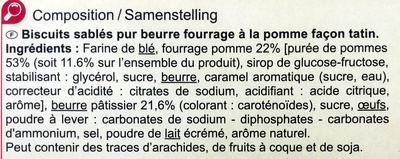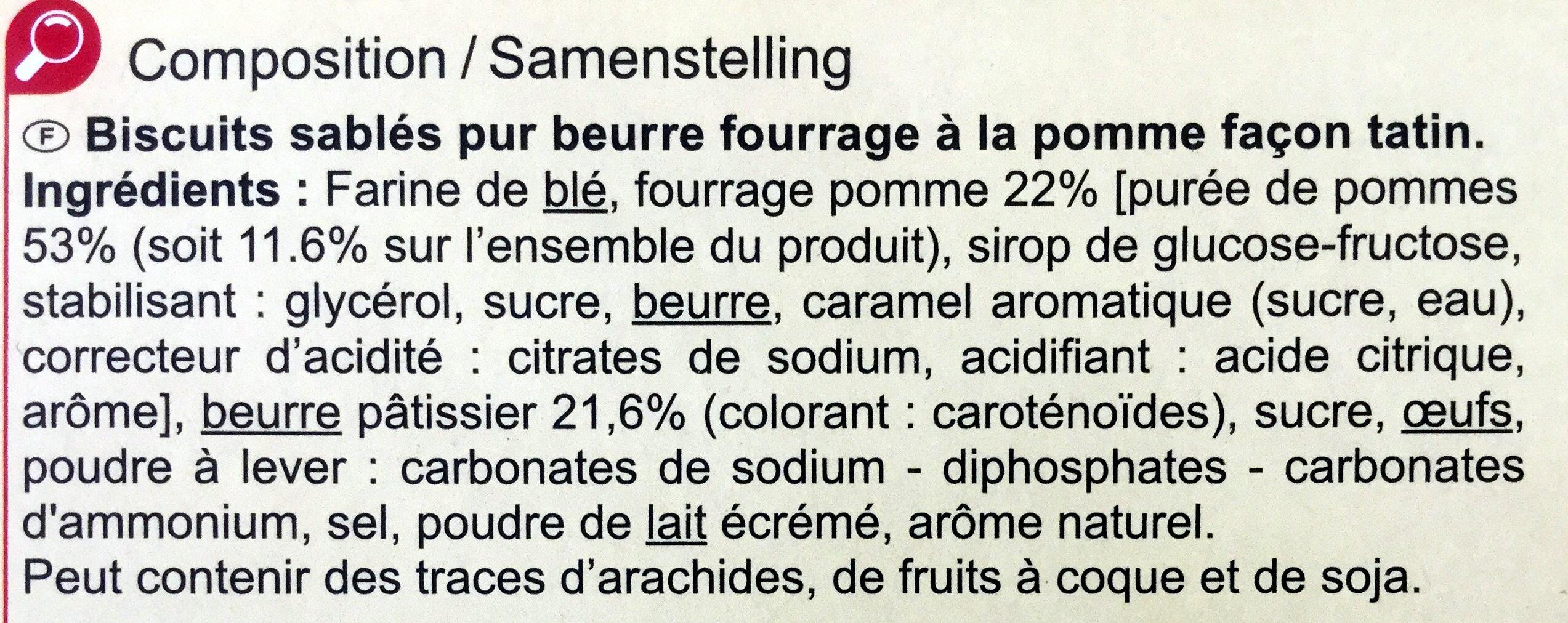Sablés coeur saveur pomme façon tatin - Carrefour - 100 g
Important note: this product is no longer sold. The data is kept for reference only. This product does not appear in regular searches and is not taken into account for statistics.
This product page is not complete. You can help to complete it by editing it and adding more data from the photos we have, or by taking more photos using the app for Android or iPhone/iPad. Thank you!
×
Some of the data for this product has been provided directly by the manufacturer Carrefour.
Barra-kodea: 3560070649235 (EAN / EAN-13)
Izen arrunta: Biscuits sablés pur beurre fourrage (22%) à la pomme façon tatin, aromatisés.
Kopurua: 100 g
Ontziratzea: en:Box, en:Cardboard
Markak: Carrefour
Kategoriak: en:Snacks, en:Sweet snacks, en:Biscuits and cakes, Gaileta, en:Filled biscuits, en:Shortbread cookies, en:Fruit biscuits
Etiketak, ziurtagiriak, sariak:
en:Distributor labels, en:Carrefour Quality, en:Green Dot, en:Made in France, Nutriscore, Nutriscore E, en:Pure butter, Triman, fr:Eco-Emballages

Origin of the product and/or its ingredients: Ce sablé est fabriqué en France à partir de beurre fabriqué en UE et de pommes d'origine UE.
Producer: Fabriqué par EMB 29058A
Manufacturing or processing places: Biscuiterie Fouesnantaise (Filiale Groupe Poult) - ZA de Park C'Hastel - 29170 Fouesnant, Finistère, Bretagne, France
Traceability code: EMB 29058A - Fouesnant (Finistère, France)
Dendak: Carrefour market, Carrefour, carrefour.fr
Matching with your preferences
Ingurumena
Carbon footprint
Ontziratzea
Transportation
Other information
Other information: / Fondez de plaisir pour ce délicieux sablé pur beurre et son cœur à la pomme façon tatin. Découvrez nos autres références de la gamme "Sablés Fondants" Fabriqué en France Pur beurre
Conservation conditions: À conserver à l'abri de la chaleur et de l'humidité. Pour une dégustation optimale, à consommer de préférence avant fin : voir sur le côté du paquet.
Customer service: Interdis - TSA 91431 - 91343 MASSY Cedex - France.
Report a problem
Datuen iturria
Product added on by sebleouf
Last edit of product page on by org-carrefour.
Produktuaren orria -gatik editatua aleene, alexfauquette, carrefour, driveoff, ecoscore-impact-estimator, jacob80, kiliweb, packbot, quechoisir, tacinte.










